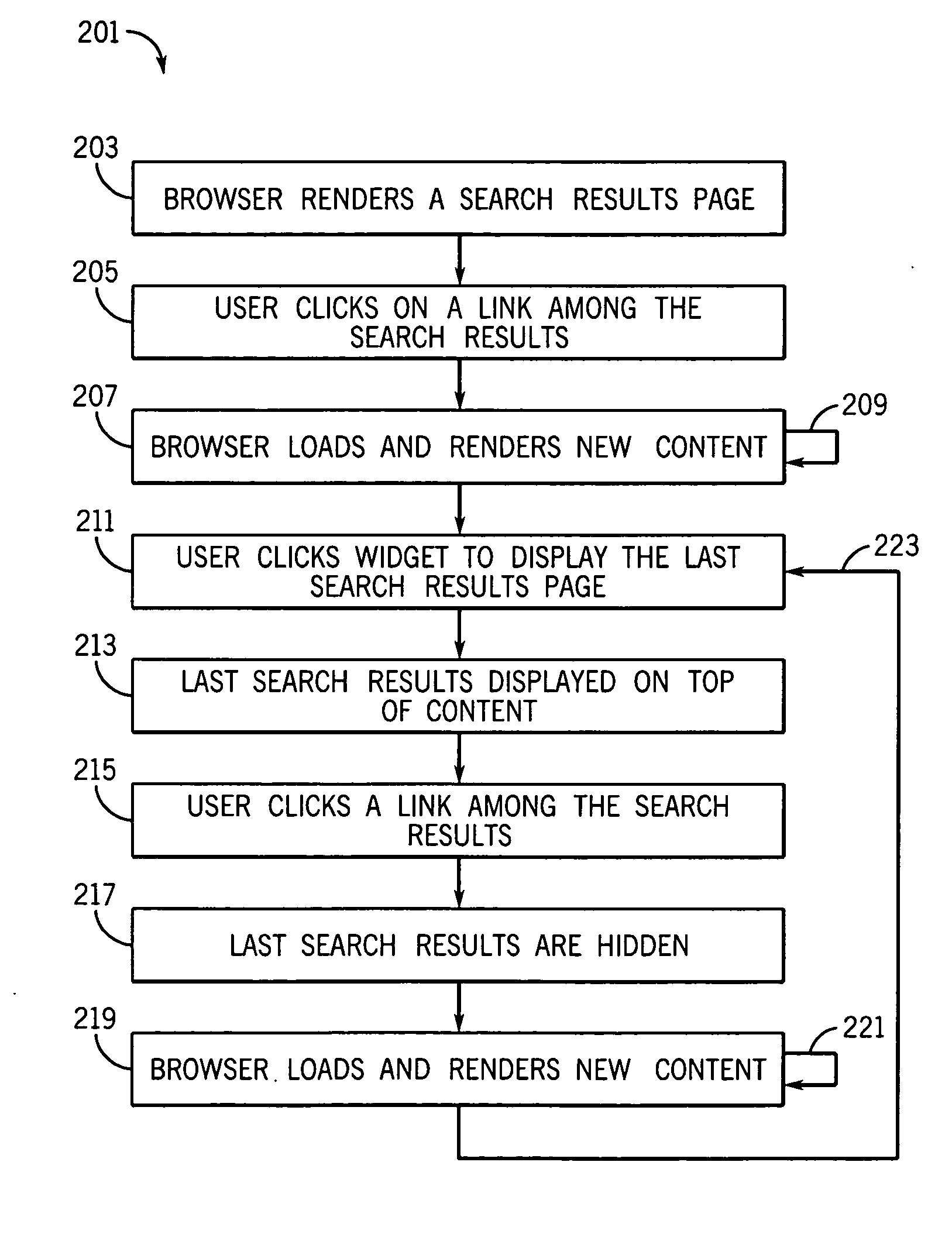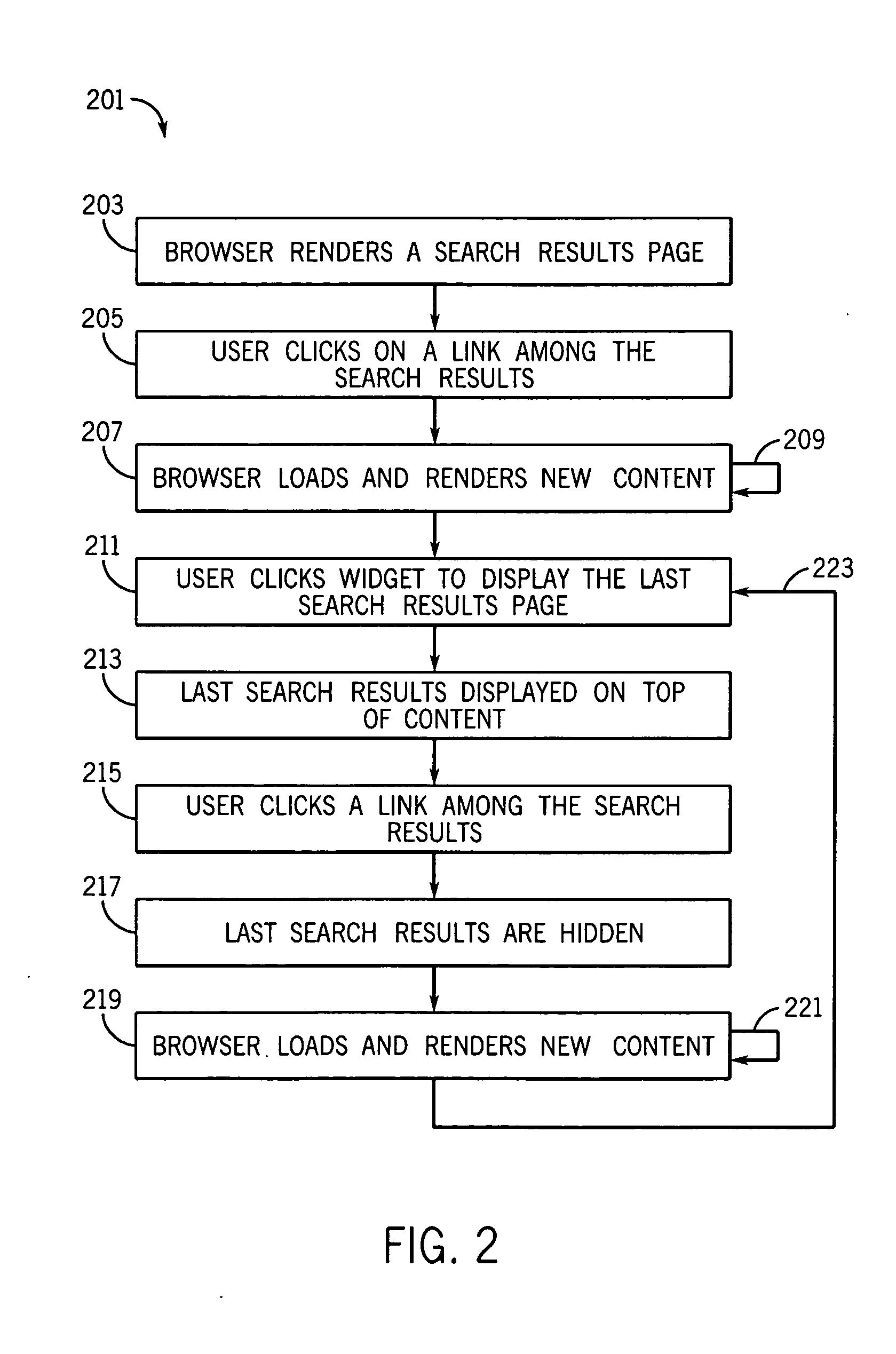Method for accessing last search
a technology of last search and access method, which is applied in the field of tools for browsing the internet, can solve the problems of inability to realize the original goal of the arpanet, inability to solve the problem of incompatibility, and cumbersome resource sharing of the mainframe computer, so as to minimize the user's experience of page load time, overcome the setbacks, and minimize the lag associated
- Summary
- Abstract
- Description
- Claims
- Application Information
AI Technical Summary
Benefits of technology
Problems solved by technology
Method used
Image
Examples
Embodiment Construction
[0041]While the present invention may be embodied in many different shapes, forms, sizes, colors, designs or configurations, for the purpose of promoting an understanding of the principles of the invention, reference will be made to the embodiments illustrated in the drawings and specific language will be used to describe the same. It will nevertheless be understood that no limitation of the scope of the invention is thereby intended. Any alterations and further implementations of the principle, the essence or the spirit of the invention as described herein are contemplated as would normally occur to one skilled in the art to which the invention relates.
[0042]A method for accessing last search in accordance with an embodiment of the present invention generally can reside in a browser or a browser extension that provides quick access to the last page of queried search results and minimizes consumption of client resources. A system for providing relevancy of content in accordance with...
PUM
 Login to View More
Login to View More Abstract
Description
Claims
Application Information
 Login to View More
Login to View More - R&D
- Intellectual Property
- Life Sciences
- Materials
- Tech Scout
- Unparalleled Data Quality
- Higher Quality Content
- 60% Fewer Hallucinations
Browse by: Latest US Patents, China's latest patents, Technical Efficacy Thesaurus, Application Domain, Technology Topic, Popular Technical Reports.
© 2025 PatSnap. All rights reserved.Legal|Privacy policy|Modern Slavery Act Transparency Statement|Sitemap|About US| Contact US: help@patsnap.com



